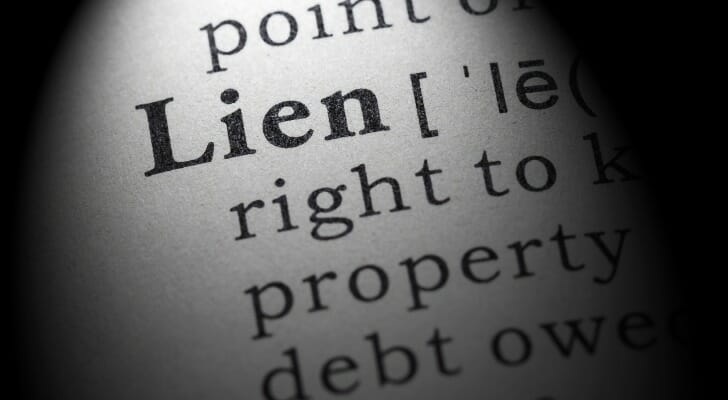Liens can spell trouble, especially if you find yourself on the receiving end of one. In essence, a lien is a legal claim placed on an individual’s or business’s property, often used as a tool to ensure debt repayment or enforce a judgment. Whether due to unpaid debts, unresolved legal judgments or as a means to secure future payment, a lien can restrict the property owner’s ability to sell or transfer their asset. Courts typically issue liens when a debtor either cannot or refuses to settle a financial obligation. If you’ve received a lien notice, or are considering agreeing to a lien on your property, consulting with a financial advisor can provide guidance on how best to handle your options and protect your financial interests.
What Is a Lien?
A lien is a legal claim that a creditor places on a debtor’s property to secure payment of a debt, granting the creditor rights over a portion of that property’s value. Liens are typically placed on high-value assets like homes or vehicles. When the property is sold, the lien holder (creditor) is paid the owed amount directly from the sale proceeds.
In some instances, a lien grants the creditor the right to force a sale of the property. An asset, such as a home or vehicle, that is not liquidated holds no immediate value to the creditor, who may not want to wait until the debtor decides to sell. By enforcing the lien, the creditor can initiate a sale to receive payment. The creditor collects the amount of the lien, while any remaining proceeds from the sale go to the debtor. This also addresses the potential reluctance of the owner to sell the property once a lien is in place.
For example, if you owe $10,000 to the bank and have fallen behind on payments, the loan terms may allow the bank to place a lien on your home in case of default. The bank could then seek a court judgment to enforce the lien, granting it the right to claim $10,000 of your home’s value. This judgment would allow the bank to either take steps to sell the property or require you to do so. Upon sale, the bank would receive $10,000 from the proceeds, while you would retain any remaining balance.
In this case, the bank could go to court and get a judgment to enforce this loan. Once enforced, the lien would give the bank ownership of $10,000 worth of your house. The bank could then force a sale, either seizing your house to sell itself or requiring you to sell it immediately. The bank would keep $10,000 from your house’s sale price, and you would keep the rest.
How Are Liens Used?
Many contracts include liens in them. For example, home and auto loans typically include a lien on the underlying property in case you fail to make your payments. Mechanics often write liens into their service contracts, as do contractors and attorneys. When someone “secures” a loan with his personal property, that means that the loan contract includes a lien against that property. It’s a way of guaranteeing payment. The lender knows that even if you default on this loan, the lender still has a way of collecting his money.
Courts also use liens to enforce their judgments. Once a court has ruled against someone, it creates a formal debt with a wide variety of enforcement mechanisms in cases of nonpayment. Seizure and garnishment are both common, as are government-issued liens. If you lose a lawsuit and fail to pay, the government may well issue a lien against your property.
Finally, the Internal Revenue Service will often secure what is known as a tax lien to collect unpaid taxes.
Liens As Legal Instruments

Liens are a legal mechanism for enforcing a loan. This means that they do not give the creditor any automatic rights over your property even if you miss a payment, default on a loan or otherwise trigger this clause.
While it is often reported that creditors can enforce a lien automatically, this is incorrect. Before a creditor can enforce a lien, the creditor must go to court and get a judgment. Banks, lenders or any other creditors first must show a court that the conditions of the contract have been met. Then the court will issue a judgment of enforcement. This judgment acts as a property transfer. Once issued, it transforms the lien from a potential claim on your property into partial ownership of the underlying asset.
Liens appear to be privately enforced because they’re highly routine. While everyone has the right to a hearing, in practice many courts automatically sign off on collection petitions. This problem became particularly acute during the mortgage crisis of 2008/2009 when banks would file hundreds of petitions each day to collect on people’s houses. Most courts granted these petitions without review, leading to thousands of illegal foreclosures.
Sometimes banks and lenders illegally enforce liens without seeking a judicial writ. Many will seize assets on their own when someone fails to pay a debt. This is far more than a technicality. Besides illegal repossessions, some lenders keep all of the proceeds of a sale regardless of how much money the debtor actually owes.
Your Rights and Responsibilities
It’s important to understand that, like most laws regarding personal property, liens are very specific to state and local laws. Be sure to research your specific rights and responsibilities based on where you live. In general, however, the only way to remove a lien on your property is to pay off your debts in full.
With few exceptions, as long as you make payments against the underlying debt, a lien does not affect your ownership or possession of the property. The lien only affects your ownership if you miss payments and the creditor secures a judgment. At that point, you then only partially own the asset, subject to the amount in question.
Common Exceptions
The most common exception is that most liens affect your ability to sell the asset. The exact nature of this will depend on the specific contract. Some liens require you not to sell the asset at all until the debt is paid off. In those cases, the lien holder wants to ensure that the collateral remains intact. Others require that if you do sell the asset, you must immediately pay off the debt. For example, a typical mortgage does not restrict your ability to sell the house. However, if you do sell, you must use the proceeds to pay whatever is left on the loan.
As noted above, when a creditor enforces a lien he may also acquire the rights to force a sale. This, too, depends on the exact nature of the contract and judgment, but it is very common. Once again, let’s use a typical mortgage as an example. If a borrower defaults on mortgage payments, the bank may foreclose on the home. This is a lien enforcement process. The bank takes the home and sells it, keeping the amount owed and returning any excess to the borrower.
As a borrower, it’s extremely important to avoid this process regardless. When a lender liquidates assets, they have no incentive to maximize your value. They only want to collect the amount owed.
Bottom Line

A lien is a way of guaranteeing payment of or collecting on a debt by asserting a legal right to that portion of the debtor’s assets that are equal to the unpaid balance of the loan. Filing a lien is a legal claim, typically used on loans for a high-value asset such as a vehicle or a residence. If enforced, seizure and foreclosure sales typically sell assets significantly below market value. If you will miss payments on a loan, your best move may be to sell the asset yourself. It’s your best chance to at least keep some of the money involved.
Tips for Handling Debt
- Liens are a problem and, like most problems, the best way to deal with them is by planning ahead so they can avoided. Finding a financial advisor doesn’t have to be hard. SmartAsset’s matching tool matches you with up to three vetted financial advisors who serve your area, and you can have a free introductory call with your advisor matches to decide which one you feel is right for you. If you’re ready to find an advisor who can help you achieve your financial goals, get started now.
- Don’t fear debt; understand it. In our article on the subject, we explain what you need to know about debt, credit and making sure that the bill collectors never have a chance to come after your assets. Having access to a free personal loan calculator can also be a great help.
SmartAsset follows a rigorous and detailed Editorial Policy, that covers principles surrounding accuracy, trustworthiness, editorial independence, expertise and objectivity.
Photo credit: ©iStock.com/MonthiraYodtiwong, ©iStock.com/Devonyu, ©iStock.com/Goodboy Picture Company
